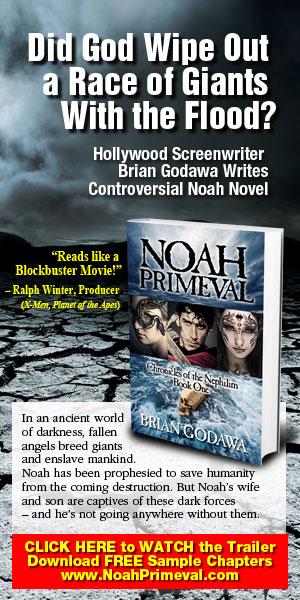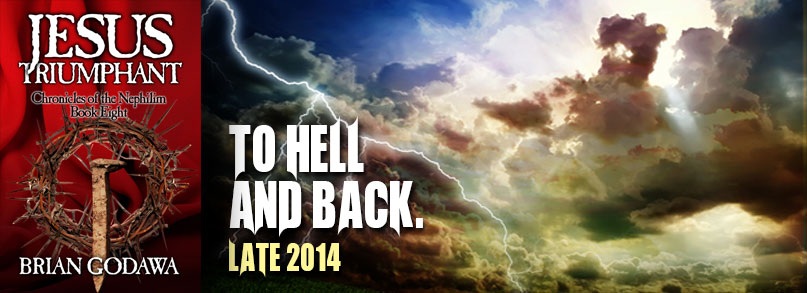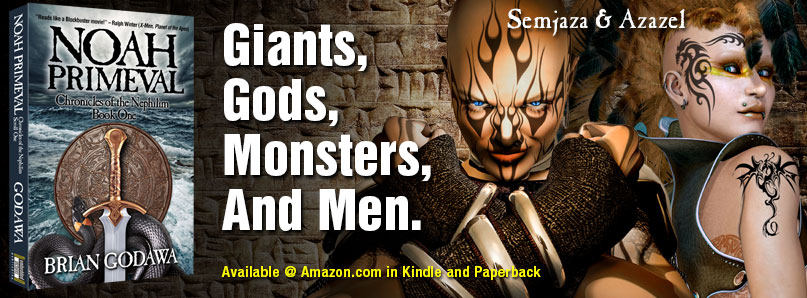
In my last post, I addressed the issue of concern that some religious believers have about whether or not to see the new movie Noah by atheist director Darren Aronofsky. I explained that there was merit in both arguments to see or not to see the movie. I concluded that if you were not sure whether you wanted to see it or not, I will be blogging my own analysis of the movie after it opens on March 28. Or you can read other reviewers you respect before you make your decision.
I’m the Hollywood screenwriter and novelist who wrote the blog analyzing an early script of Noah that went viral. It was quoted by all the news outlets, mostly for its negative comments while ignoring the positive ones.
Why did I do it? Because I LOVE movies, and I see their potential for both good and bad influence on our cultural values. That’s why I wrote Hollywood Worldviews: Watching Films With Wisdom and Discernment. To help people decide for themselves what values and meanings they are ingesting in their media consumption.
But I’ve also studied the story of Noah for many years, wrote an Amazon category bestselling novel called Noah Primeval, and set up a website, www.noahprimeval.com for all things Noah. My fans want to know about these things, and so do I.
Things To Look For
Most movies are a mixture of good and bad. But discerning that difference can be difficult without a more informed approach to understanding how storytelling and film embodies worldviews and meaning. So, if you’ve decided to watch the movie, I wanted to offer up some ideas to keep in the forefront of your mind as you watch. These will help you understand and appreciate what you like about the movie and be able to discern what you may not like about it for your discussion with others.
Have Some Tolerance For Creative License And Fantasy In The Story
Some hyper-literalists are already complaining that the movie doesn’t follow the details of the Bible. But some of those details are either not relevant or subject to differing interpretation. So chill out.
Take for instance, one example some have talked about. The Bible says that “eight persons were brought safely through water” (1 Peter 3:20). That is, Noah, his wife and three sons, and their three wives. But some hyper-literalists have yelped that in the movie, only six people are in Noah’s family on the ark. Two wives are missing.
The problem with this criticism is its lack of imagination. We find out that one of the daughters is pregnant with twins, which will be the two wives of the other two sons. So, if you are a Pro-Life Christian, then you have to acknowledge that that is technically the eight persons on board, including the four wives. Unless you want to deny the humanity and personhood of the unborn.
Watch The Hero’s Character Arc (not Ark)
The details that really do matter are the ones that reflect the meaning or worldview of the story. And those can be found in paying close attention to the hero’s journey. In storytelling, the hero’s journey is the incarnation of the meaning of the story.
The hero starts out as someone we root for and so we learn to see the world through his eyes by our identifying in sympathy with him. But the hero has an inner flaw, something wrong about the way he sees the world. This flaw results in him making some bad choices. So even though he is sympathetic, we still see he has a goal that he pursues for flawed reasons. As he pursues that goal, he is blocked by obstacle after obstacle, including the villain, that thwarts him at every turn.
The story builds until the point where the hero appears that he will never achieve his goal. When all hope is lost, he faces the truth about himself and gains the inner understanding of his flaw that allows him to achieve what he really needs instead of what he wants. He then embraces this truth, changes and finds the strength to do the right thing at the end. This is the redemption of the hero.
What Is The Hero’s Character Arc In Noah?
Noah was a righteous man of faith. But he was not sinless like Jesus Christ. Noah was a sinner, and therefore had character flaws. The Bible reveals Noah’s drunkenness after the Flood for instance (Genesis 9:21).
So look for Noah’s character flaw in the story and you will understand the meaning that the storyteller is conveying through the hero’s discovery of that flaw. What Noah learns by the end of the film is the moral premise of the story.
How does Noah see the world in the beginning of the story?
As the story moves, what is apparently wrong about the way that Noah sees the world?
What is the villain’s motivation for fighting Noah? This will be the worldview that the storyteller is trying to criticize as wrong or evil.
What is the catalyst that helps Noah to see he is wrong near the end of the story?
How does he change his view about the world or himself and why?
What does he do differently at the end to show a changed life?
The problem with some movies is how dark and unsympathetic the heroes can be. Ask yourself is Noah’s flaw too extreme? Does it make him unsympathetic to you? Why or why not?
That is how the storyteller influences us to see the world through the eyes of the hero with whom we sympathize or identify with.
Bonus Questions About God
God is a tough character to depict in film. Too direct and it seems cheesy, too indirect and it seems like God could be the delusions or dreams of a religious nut.
How is God depicted in the movie?
Does he have a real presence or is he depicted more as a belief that could be explained as self-made dreams or delusions?
Why is God ultimately judging the world? Many sins will surely be depicted, but is man’s sin against God the primary reason or is it man’s “misuse” of the environment?
Since Aronofsky is an atheist and does not believe man is created in God’s image, but rather that God is created in man’s image, how do you think that worldview informs his take on the sacred story of Noah?
Brian Godawa. Hollywood screenwriter and author of the Amazon bestselling novel, Noah Primeval, a Biblical fantasy with creative license that retells the Noah story without a modern secular or environmentalist agenda.





